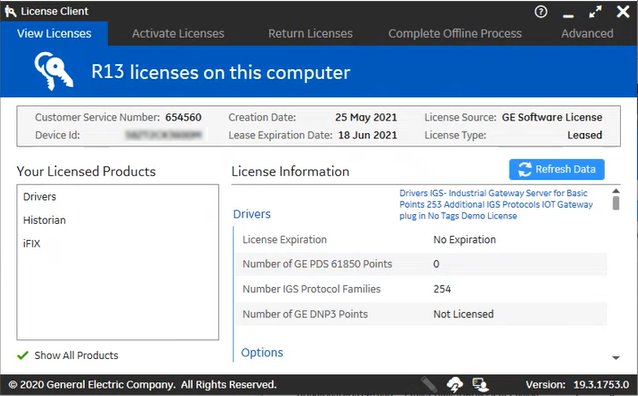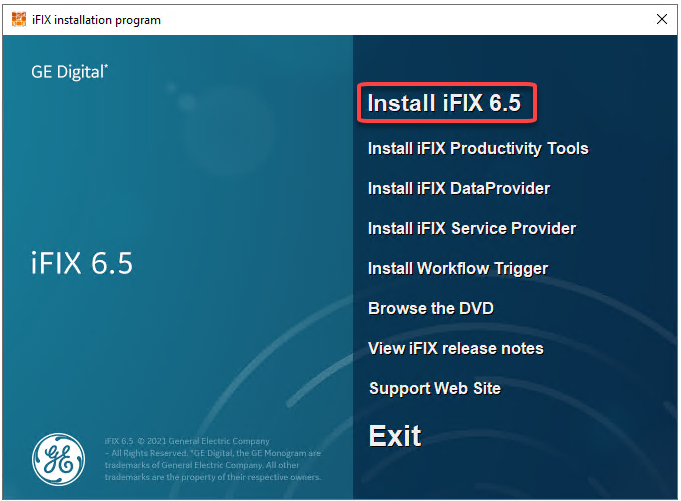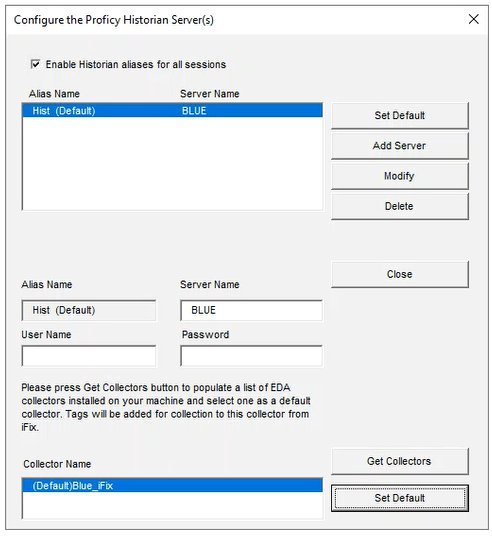Quick Start: iFIX, IGS, and Historian
First time installing iFIX, IGS, and Historian all on the same computer? Want to quickly set up a system so that you can get up and running fast? The following sections outline a few simple steps to get going right away!
In very little time, you can set up iFIX, IGS, and Historian all on the same computer and feel assured that your system is configured correctly and running as it is supposed to.
While there are many flexible ways to configure your system, most users will go through the following steps:
Prereqs | Step 1: Download | Step 2: Licensing | Step 3: iFIX | Step 4: IGS | Step 5: Historian | Step 6: iFIX Collector | Step 7: Test Picture

After everything is installed and configured, you can begin to realize the full potential of your GE Digital solution! Click this link for a PDF download of these steps.
PreReqs
Before you set up your system it is really important that you make sure the computer that you want to install everything on meets the minimum requirements. Use the links below to check the system requirements before you proceed. Make sure you have enough disk space and memory:
The steps that follow assume that you are installing the iFIX, IGS, and Historian for the first time on your computer.
1. Download Your GE Digital Software
After you get an e-mail from GE Digital with your product download links and activation codes, login in to the web site specified in e-mail using the same e-mail address that the activation codes were sent to. You will need an Internet connection to complete these steps. For more details, use the link below for guided details on how to obtain your product downloads from Orders page.
Steps to Download Your GE Digital Software

2. Install and Configure Licensing
After you download Proficy Common Licensing, you'll want to use this executable to install the 1) Local License Server, 2) License Server Tools, and 3) License Client:

Be sure to run the licensing installer as an Administrator. After installing the licensing components, restart your computer.
Download your codes using the Local License Server Administration Tool. Run the License Client to activate your entitlements. After doing these steps, be sure to confirm that all licenses appear in the License Client. Use the link below for detailed steps.
Steps to Install and Configure Licensing


3. Install iFIX
Next, install a Typical iFIX server using the defaults. Be sure to run the iFIX install as an Administrator (right-click and select run as Administrator). When installing, choose to install and register the local instance of Configuration Hub.
Be sure to write down the client ID and client secret you enter during the install, as you will need that if you want to use Configuration Hub at another time. Be aware that only English alphanumeric characters values and the following symbols are supported in the client ID and client secret fields: "-><~!@#$%^&*?|"

4. Install IGS
Install IGS using the defaults. Be sure to run the IGS install as an Administrator (right-click and select run as Administrator). If you get a message to install some prerequisites on startup, click OK and continue to do so, and the restart and try again. Choose to install All Features, and select the Skip Setting a Password at this Time option. Add IGS to the iFIX SCU.5. Install Historian
Next, install all of the Historian components specified below using the defaults. Be sure to run the Historian installs as an Administrator (right-click and select run as Administrator). Be aware that post install of the Historian server, it is recommended that you disable the Enforce Strict Client Authentication and Enforce Strict Collector Authentication options post in the Historian Administrator.
- Steps to Install Historian Server
- Perform Historian Server Post Install Tasks (steps not linked on the install screen)
- Steps to Install Historian Collectors
- Steps to Install Historian Client Tools

6. Configure Historian to iFIX
To configure the collector, in iFIX, configure a task for the ihfixcollector.exe application using the RUNASDOS command.
RUNASDOS command line can only be used if iFIX is installed on the same computer as Historian. NOSERVICE REG=CollectorName command line instead (where collector name would default to MachineName_iFIX). Since we are not installing on different computers here, you do not need to use the NOSERVICE REG command line in this instance. 
Next, from the iFIX WorkSpace on the Administration tab, configure the Historian Server.

7. Build Your Test Picture
Start iFIX and in the iFIX WorkSpace create a picture, and insert two data links that point to the real-time tags. Next, insert a Line MultiLine Chart to display the historian tag data for both tags. Switch to run mode to confirm that you can view data. Click the following link for more detailed steps:
